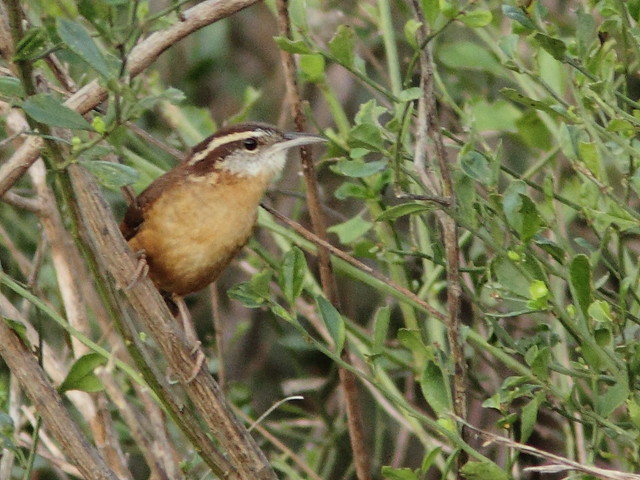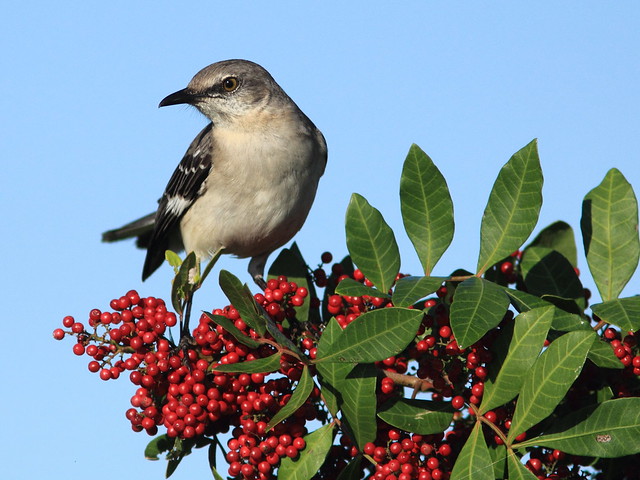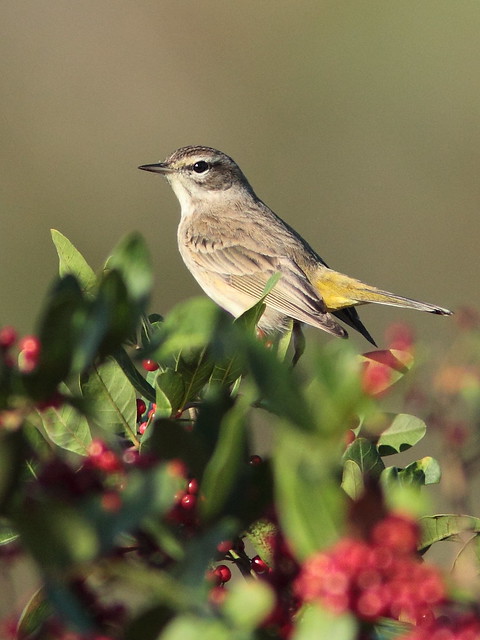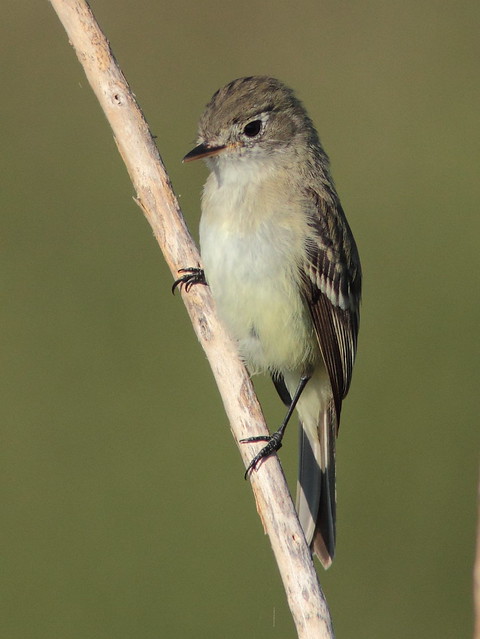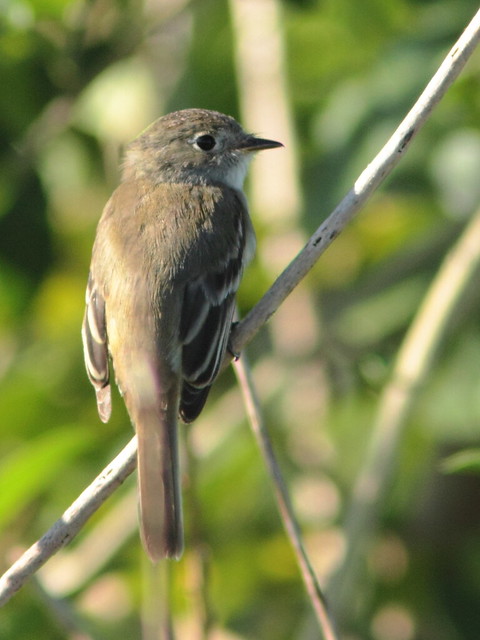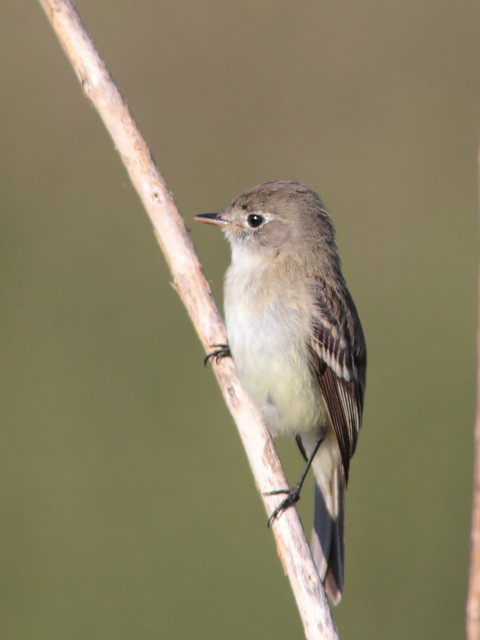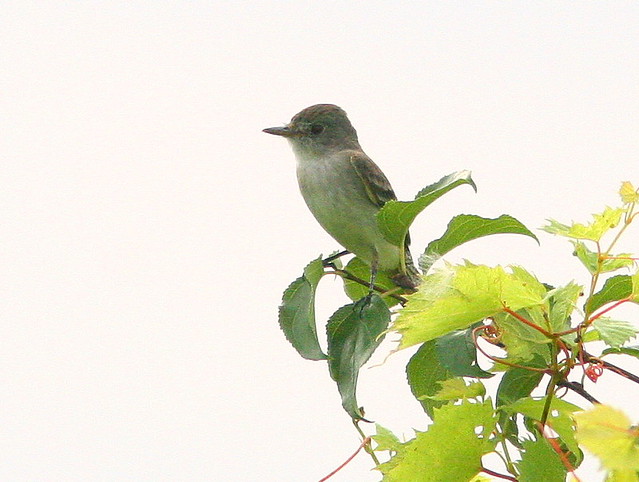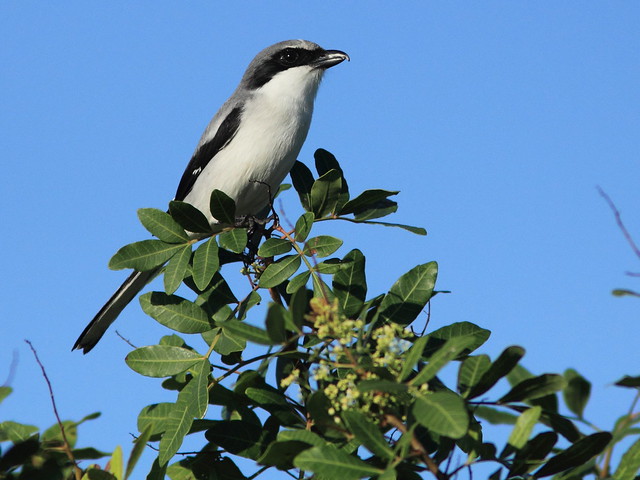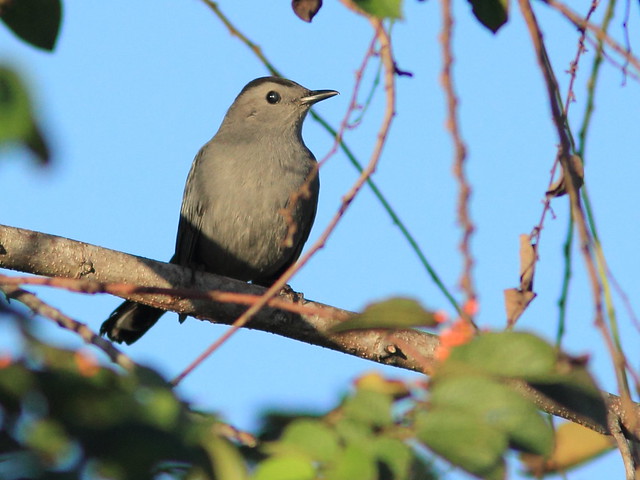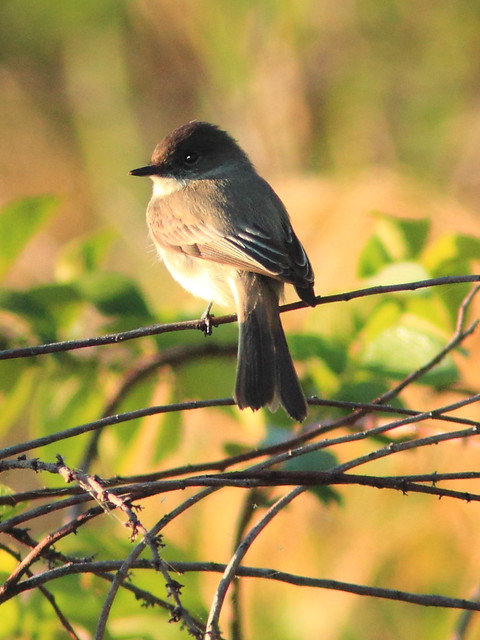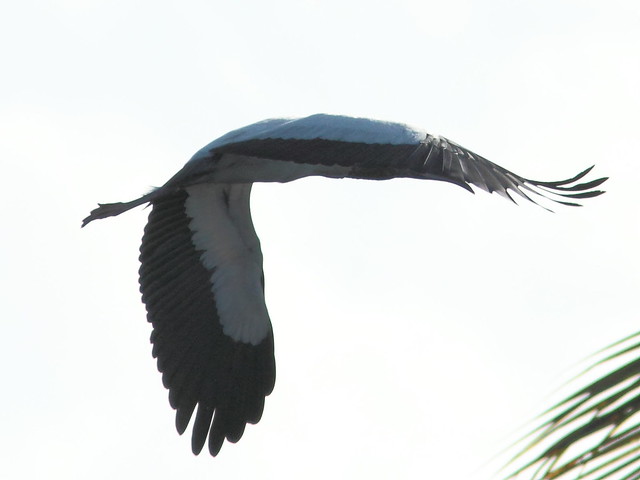Posted by: Ken @ 6:25 am
After being nearly home-bound for a couple of weeks, I finally got out on our local patch. Mary Lou and I took a slower “power walk” in the predawn darkness while our company were still sleeping. Afterwards I felt good enough to venture out on the gravel road that leads into the wetlands near our home. As I passed the entrance gate of our subdivision, the sun was already peeking out above the horizon.
It was too late to look for the Bobcat family. The last couple of times I only caught sight of one cat, much further down the trail than before. The cubs seemed too young to have gone off by themselves, so I plan to resume my watch as soon as I get over this bug. This morning I did walk along the trail on the levee. At a somewhat slower pace, I paid particular attention to the silence that greeted me. Usually there is at least one mockingbird or cardinal brightening the morning with song, but the only avian sounds I heard were the calls of a few Blue Jays and the raucous squawking of Boat-tailed Grackles on the roofs of the homes across the canal.
Suddenly the silence was broken by the jubilant “Tea-Kettle-Tea-Kettle-Tea-Kettle!” of a Carolina Wren. It is amazing how such a loud noise can come from such a small bird. It is also very difficult to localize the creator of the song, as the bird always sounds nearer than it actually is. It also loves to sing from a secluded perch. Since I did not feel particularly energetic, I decided to just wait for the little bird to show himself. I knew it to be a male. Females also sing, but a softer trill, usually in a duet with a male and especially in the spring.
One trick I have learned is to look for the pulsating white throat of the wren as it sings in the dark seclusion of the low to mid canopy. This did not work, but the songster persisted and so did I, and finally I caught sight of movement in the bushes, quite a bit further away than I expected. I followed the small bird in my camera’s viewfinder and got several poor exposures, most partially obscured, or marred by the movement of its head and lower bill.
Only after taking a couple of dozen photos did I realize that I had forgotten to use my Christmas present– the monopod from Scott, our neighbor and hiking companion! It was the perfect accessory to improve the quality of my images of small birds, my favorite subjects. So often they are seen only from a distance, and their photos require heavy cropping. Quickly, I fastened the monopod to the camera and got ready for some great results. However, while I was fumbling, the wren decided to end its concert and depart (though I cannot vouch for the latter, as it may have simply melted into the same bush). In any event, it was gone forever.
Now I sorely needed to take some test shots to check out the monopod, so I clicked at subjects rather randomly and squinted at the LCD display to see if they appeared sharper than usual. A Northern Mockingbird, perched nicely against the sky on some ripe Brazilian Pepper berries, was a willing subject.
The mockingbird flew to another perch, striking a different pose in subdued light.
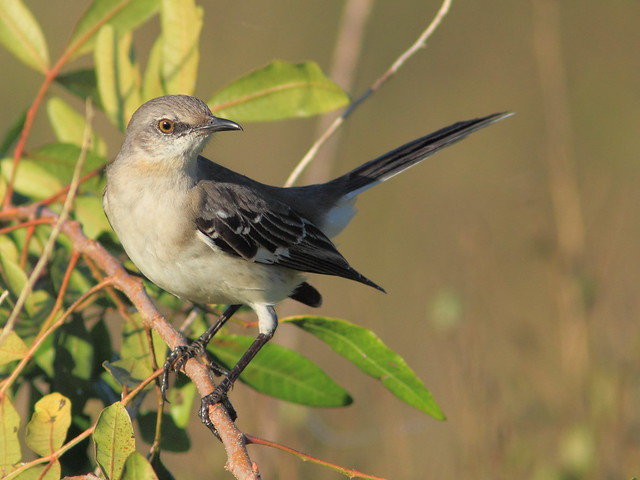
In the meantime, a Palm Warbler appeared atop the pepper tree, against a background of distant foliage.
To my surprise, a small flycatcher came out of nowhere and alighted right in front of me. Its call sounded like the “Whit” of a Willow Flycatcher.
It was obviously an Empidonax species, but which member of this genus? Its wings were quite short, as the primary tips barely extended to the roots of its tail feathers.
Willow Flycatchers are a bit unusual here during winter, and strongly resemble Alder Flycatchers, the other member of the “Traill’s” complex. Many such Empids are silent, and are simply called “Traill’s” Flycatchers, though Alder Flycatchers are said to be much more prevalent. In any event, this bird had a short bill and quite a prominent eye ring. These features , along with the short wings, strongly suggest that is was a Least Flycatcher.
Indeed, when I got home and researched their vocalizations, the Least Flycatcher is said to give a sharper “Wit!” call than the “Whit” of a Willow, a rather fine distinction. Up in Illinois, I often encountered Least Flycatchers singing “Che-Bek,” but this was the first time I had ever heard the “Wit” call. For comparison, here is a photo of a Willow Flycatcher I took last year in Illinois. Note the more substantial bill and subdued eye rings. To my eye, the Willow and Alder Flycatchers also look more robust, more closely resembling wood-pewees without crests. This one confirmed its identity by singing “Fitz-beeyou.”
Willow Flycatchers also have unusually broad bills. I am quite certain of the identity of this one that I photographed here in Florida this past October, as its “Whit” call was distinct, and it had a faint eye ring and did not exhibit the crest of an Eastern Wood-Pewee.
Loggerhead Shrikes have been rather uncommon in the wetlands, though I have seen a few in the residential area near our home. I took a practice shot of this one.
After a short walk but extended standing on the levee trail, I stretched my legs and walked back to the gravel road, advancing towards the large lake. Trema trees are a great source of food for wildlife, as their fruit is produced throughout winter. However, only a few trees have ripe berries at any given time. I found one such tree, and at first only saw Palm Warblers, mockingbirds and this Gray Catbird.
My eye then caught movement of a bird that looked too big to be a warbler. Indeed, it was a Blue-headed Vireo.
Suddenly, I realized that a Common Ground-Dove was also staring down at me.
The little dove almost blended in with the branches, and I waited for it to move into the open for this shot.
An Eastern Phoebe then joined the others on the tree. It pecked at one of the berries and ate something, perhaps an insect. It probably would have been unusual for it to eat a berry, though I have seen other flycatchers (kingbirds) eat fruit.
At the lake, I watched as a pale Little Blue Heron captured and ate some creature in the high grass– a lizard? It then stepped over to a rock, where it appeared to be trying to disgorge its catch, shaking its head back and forth with its mouth open.
Nothing ever came out of its mouth, but before finally settling down it repeatedly scratched at its upper throat as if attempting to push something out towards its bill.
A Gulf Fritillary, its image steadied by my new monopod, provided some nice views.
On my way back home, I passed the Trema tree and saw a second Common Ground-Dove roosting nearby in open sunlight. They seem always to travel in pairs.
As a bit of a sad “footnote,” I again saw this one-legged Wood Stork, which I first photographed four weeks ago. I don’t know how it is surviving with only one leg. It is their habit to stand on one foot and stir the water with the other, thus frightening fish into their open jaws. Hopefully it will stop somewhere nearby (my backyard, please!) so its ambulation and foraging method might be observed.














